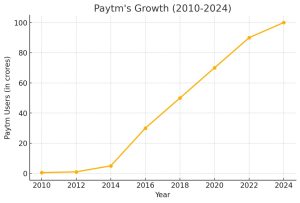In today’s digital era, Facebook pages have become a powerful tool for small businesses. It is not only free but also easy to use and gives a good reach. It helps you to get new customers, increase brand awareness and take business to new heights. In this blog, we will learn how one can make a good business out using Facebook Pages.
GUIDE TO MAKE A FACEBOOK PAGE
-
Make a Facebook account
To make a Facebook page, one needs a Facebook account. This is free of cost. Remember to give genuine information as this would influence the reliability of your business.
-
Make a new Facebook page
You can mark a page once you have an account. Facebook homepage has a menu option, where you have to choose “Pages”. You will get an option for a new page. Choose it & enter information about your business like name, category and some details. Remember to fill these details carefully as they are your first contact with future customers.
You May Also Read:
7 Strategies For Getting More Business From Social Media
-
Give the page a presentable look
Design of your Facebook page is the first impression of your business. Choose an attractive profile picture and cover photo that represents your business. Give complete details about your business in the “About” section. Add contact details, working hours & location etc.
-
Plan Your Contact
Timely and attractive content is key to a successful Facebook page. Post high quality pictures of products with their prices & availability. Post about offers & discounts regularly. To engage with customers, conduct Q&A, Survey, live sessions etc. Keep your content informative as well as attractive.
-
Boost Your Reach
Use various strategies to boost your reach. Ask your family friends, acquaintances to join as well as promote the page, send your links to similar groups. Post about your page on other platforms like WhatsApp & Instagram.
You May Also Read:
How to Build a Successful Business on Instagram from Scratch?
-
Contact with Customers
Answering your customers is important. You can answer through Facebook or WhatsApp. Set “auto-response”, so that no message is unanswered. Take reviews & feedback and use them wisely to fix your mistakes & grow the business. excellent Customer service will strengthen your reputation and increase customer loyalty.
-
Payment & Delivery Services
Set a well-organized payment & delivery system. Use digital payment options like UPI, Google Pay, Paytm. For large scale businesses, you can use Razor pay. Delivery services can be managed by contacting local delivery partners & National Courier Services. Set up clear delivery conditions & time span for transparency.
-
Do analysis using Facebook Insights
Analytics is a free tool presented by Facebook. You can use it and understand how effective your content is, who is your target audience & what are their reactions. You can make future content strategies using this data and get better results. Customize your content according to the trends & interest of customers.
You May Also Read:
How to Increase Sales with Low-Cost Marketing Ideas
CONCLUSION
Facebook pages are a powerful tool to help your business grow. A well-planned & successful strategy can help you reach new markets, strengthen customer relations & increase sales.
If you’re also struggling with low sales in your business, this article can be extremely helpful for you. Moreover, if you’re facing any kind of challenge in your business and are looking for expert guidance, click on the link to the Leadership Funnel Program and get in touch with us now.




